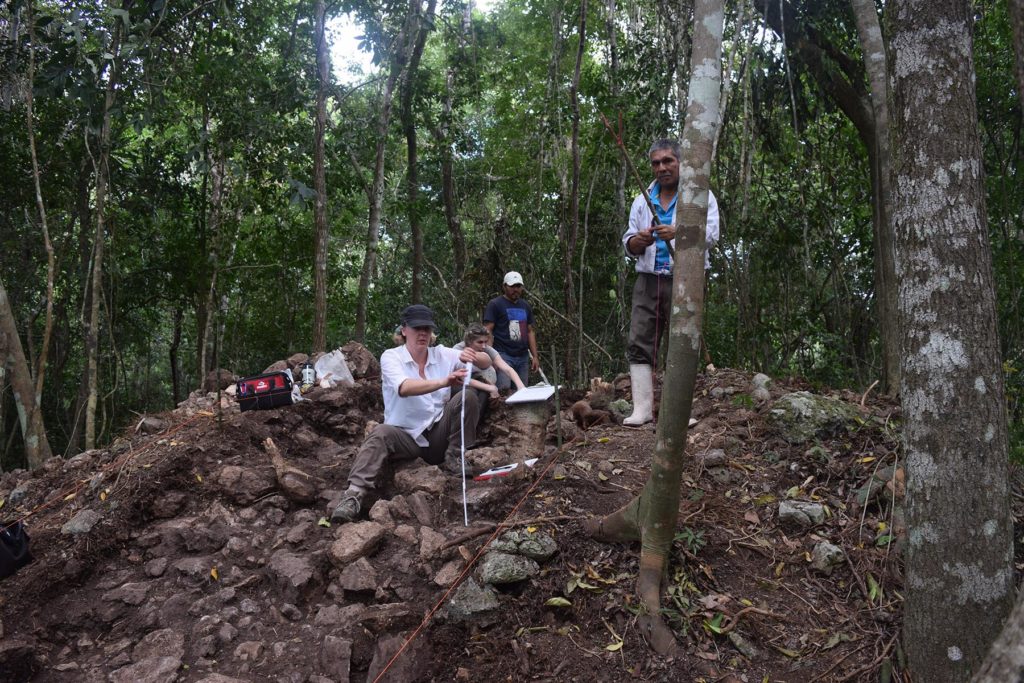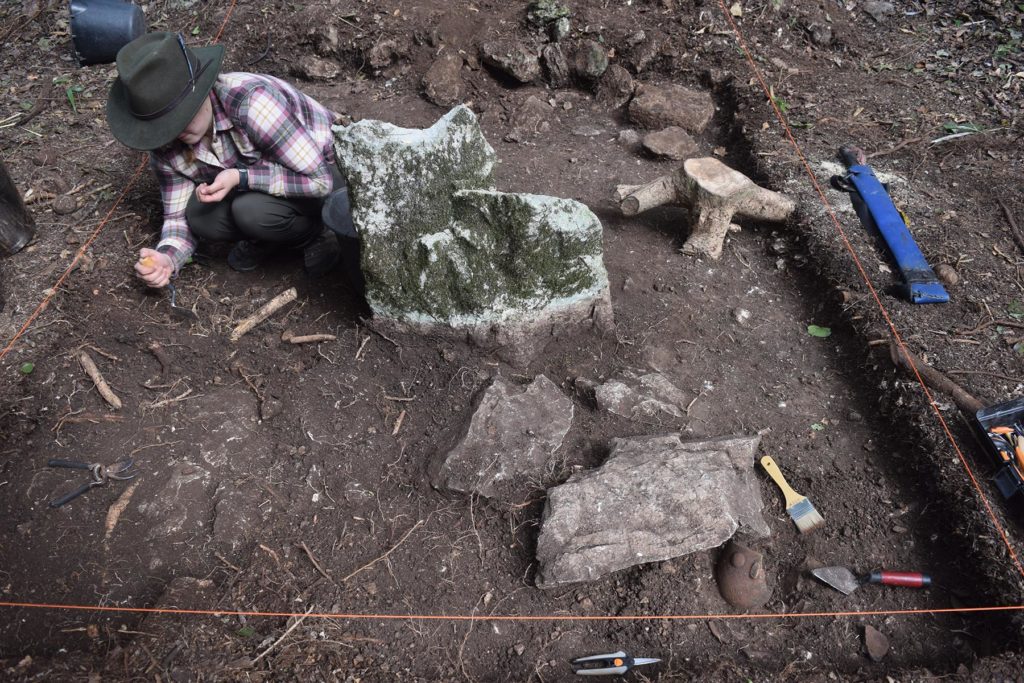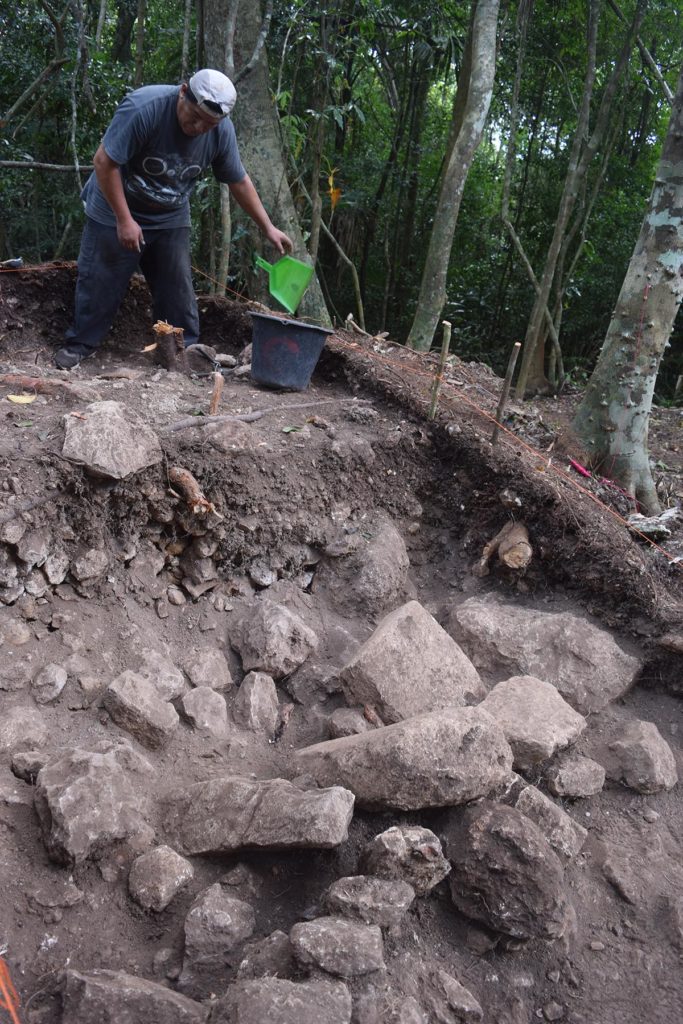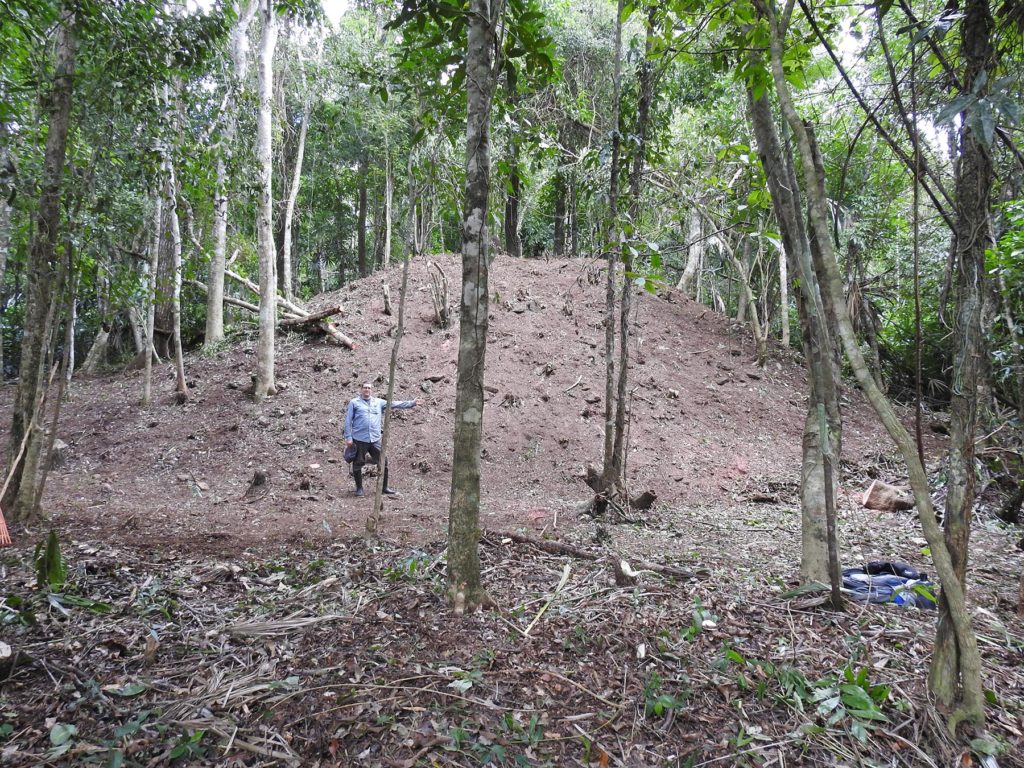The third week of the field season was the first one with any excavation, especially as we welcomed four new students to Caracol on January 31, and only received 4 additional men on Sunday, February 3. Accordingly, we began research in earnest on Monday, February 4 with half the crew going to locales west of Puchituk that was a 3 mile drive out the road and then a 20 minute walk. The other half of the crew drove 4 miles down the road and walked 15 minutes in to the Monterey Public Architecture (MPA).
“Barracuda”
Adrian is carrying out excavations in the Puchituk location as part of his dissertation research that is partially supported by the National Science Foundation. During this week, he laid out excavations in three residential groups. The students working with him were Brooke, Roxayn, Angelo, Lauren, and Haley. The men working with him were Carlos, Saul, Gustavo, and Abner.
The residential group furthest inland is at the top of a hill across the valley from the Puchituk Terminus (where we worked last year); this group was named “Barracuda” and had three excavations opened. The first was an axial trench on the eastern building, C216B, which produced an enormous amount of lithic material on the front of the building and – by week’s end – capstones for a tomb in the rear of the building. The second excavation was an axial trench over the northern building, C216C, which by week’s end had been stripped of humus. The third was a small pit, C216D, over a sump on the southeastern corner of the western building.
“Tuna”
Half-way down the hill was another residential plaza group that was named “Tuna.” A small stela was still standing in front of the eastern building and excavations recovered more pieces of this monument. An axial trench was laid out over the eastern building in Tuna and by week’s end had recovered two face caches to the west of the stela and capstones for a burial crypt within the structure.
“Snapper” and “Pebble”
On an elevated ridge at the base of the hill was the third residential group selected for investigation. It was nicknamed “Snapper.” The group consists of low structures and has two eastern constructions. Axial excavations were laid out over each eastern building, designated as C218B and C218C. No work was done in this group during the week.
The second location selected for excavation is colloquially known as “MPA” for “Monterey Public Architecture.” Mo, Melissa, Eric, and Mayra are all working here along with Jaime, Teo, Julio, Flavio, and Jorge. Most of the excavation during the week was carried out on a hilltop residential group above the public architecture (and closest to the road). This group was nicknamed “Pebble.”
Mo, Melissa, and Mayra all worked on the axial trench into the eastern building in this group, designated C219B, clearing the front stairway by week’s end. A looter’s trench penetrated the southern side of this building almost to the middle of the structure. Clean-up by Jaime and Julio later in the week succeeded in defining an earlier building that the looters’ had gone through at the summit of the structure. A small excavation was also placed in the northern building of the group, C219C, as this structure promises to produce architecture; although no digging was done here this week, this excavation will be used for overflow labor as drawing proceeds.
“Boulder”
Bushing continued on the large public architecture to the west of Pebble and down the hill (to the west) upon which that residential group sits. A massive eastern pyramid was cleaned and a trench, designated C220B, was laid out on axis to the building; excavation began here by Eric, Teo, Flavio, and Jorge at the end of the week as C220B. The ball court was also cleared and the central alley will be investigated for monuments at a later date. Finally, a path was cut to a second residential group, nicknamed “Boulder” and designated as C221, and excavation will commence here once we are up to full speed with 3 more men.
Diane also came in this week for a short visit, arriving on Wednesday and leaving on Saturday. She visited all the excavations in the Puchituk and Monterey venues and also went to a looted residential group just north of the aguada west of the C Group. This residential group was badly pitted with holes, but also had an open tomb in the northern structure that was quite impressive. While she was here, we also had a luncheon meeting with the head of the Belize Economic Development Council.
If the first week of excavation for the 2019 field season is any guide, this promises to be a power-packed season.











Sounds like its going to be an awesome season. Best of luck everyone!
I are looking forward to the ” enormous amount of lithic material.”